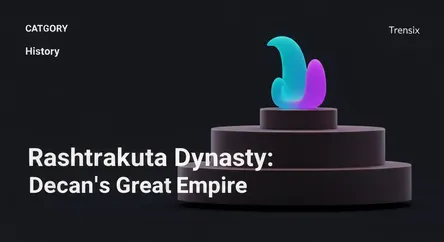History
Rashtrakuta Dynasty: Deccan's Great Empire

Explore the powerful Rashtrakuta dynasty, which dominated the Deccan for centuries and left a magnificent legacy in art, architecture, and literature.
What is it?
The Rashtrakuta dynasty was a formidable Indian royal polity that ruled large parts of the Indian subcontinent between the 8th and 10th centuries CE. Founded by Dantidurga, who overthrew the Chalukyas, their empire at its peak stretched from the Ganga and Yamuna river doab in the north to Kanyakumari in the south. Their capital was Manyakheta (modern Malkhed in Karnataka). The Rashtrakutas were known for their military strength, efficient administration, and remarkable cultural patronage. Arab travelers of the era described their kingdom as one of the four great empires of the world.
Why is it trending?
The Rashtrakuta dynasty remains a topic of significant historical interest due to its immense cultural contributions. They were great patrons of art and architecture, with their most spectacular achievement being the monolithic Kailasa Temple at Ellora, a UNESCO World Heritage site carved from a single rock. Their reign also marked a golden age for Kannada literature, with King Amoghavarsha I co-authoring the earliest known Kannada work on poetics, 'Kavirajamarga'. Their political influence, which saw them engage in a tripartite struggle for control of northern India, cements their importance in shaping the subcontinent's medieval history.
How does it affect people?
The legacy of the Rashtrakutas endures through their architectural marvels at Ellora and Elephanta, which attract tourists and scholars from around the world, showcasing ancient India's engineering and artistic genius. Their patronage of Kannada and Sanskrit literature helped in the development and preservation of these languages and their literary traditions. The administrative systems established by the Rashtrakutas also influenced subsequent kingdoms in the Deccan. Their rule was a period of religious tolerance, with rulers supporting Hinduism, Jainism, and Buddhism, contributing to the diverse cultural fabric of India.